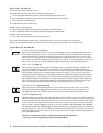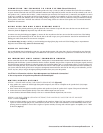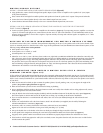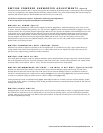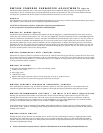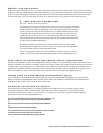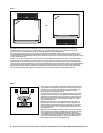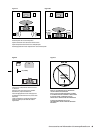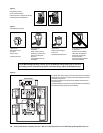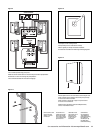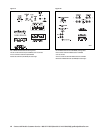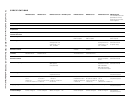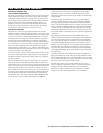
For accessories and information visit www.polkaudio.com 5
RM7200 POWERED SUBWOOFER ADJUSTMENTS (Figure 13)
The RM7200 Powered Subwoofer offers a range of setting options. We recommend the following settings as starting points, but the settings that
are best for you depend upon your speaker placement, electronics and personal taste. After you’ve become familiar with what the settings do,
experiment with alternate options to find the method that works best for your system setup.
You’ll find an informative article on “Subwoofer Positioning and Adjustment”
in the set up section at http://www.polkaudio.com/home/faqad/.
RM7200 AC POWER (Figure 13)
The RM7200 Powered Subwoofer has a built-in power amplifier and must be plugged into a standard household AC power source in order
to operate. The power switch has three positions: “On,” “Off” and “Auto” (Figure 13). When the Powered Subwoofer is plugged in (even with
the power switch in the “off” position) the power light will glow RED. In the “Auto” position, the amplifier will automatically turn on as soon
as the speaker senses a signal coming from your electronics. The power light will change from RED to GREEN upon sensing a signal. The
subwoofer will turn off approximately 15 minutes after input signal ceases, and the power light will return to RED. In the “On” position,
the power amplifier will operate and the power light will glow GREEN until the switch is set to the “Off” position or the AC cord is
disconnected from a power source. We recommend using the “Auto” position. Turn it to “Off” if the system will not be used for extended
periods of time, such as during vacations.
RM7200 SUBWOOFER LEVEL CONTROL (Volume)
Subwoofer level (volume) is adjusted via the knob on the rear amplifier plate. To set Subwoofer Level, play a piece of music that has an
average amount of bass content. Start with the knob set to “5” and the Phase Switch set to 0. Adjust by ear using a wide variety of CDs
and video sources. Adjust for deep, powerful bass without “boominess.”
RM7200 LOW PASS FILTER
This control adjusts the frequency range over which the subwoofer operates. With the RM7200, the upper range of this control will yield the
best results. Experiment and let your ears be the final judge. If male vocals sound “thin,” turn this control up until the voice sounds rich but
not boomy. If male vocals sound too “thick” or “chesty,” turn this control down until the voice sounds natural.
RM7200 RECOMMENDED SETTINGS — ON WALL & OFF WALL (Figures 13, 15a & 15b)
Mounting your right and left front satellites on the wall tends to increase their low-midrange response (the low range of a male voice).
Mounting them on stands away from the sides of the room tends to decrease their low-midrange response. If you mount the satellites on
the wall, we recommend setting your variable crossover control (see Figure 13) at a lower setting (Figure 15a). If you mount the satellites
on stands, we recommend setting your variable crossover control at a higher setting (Figure 15b).
Turning the knob up from the recommended setting (Figure 15a or 15b) will add more “warmth” to the bass and lower midrange, possibly
at the sacrifice of bass “tightness” and midrange clarity. Turning the knob down from the recommended setting will make the bass and lower
midrange sound “thinner.”
RM7200 PHASE SWITCH
Changing the phase of your subwoofer can strengthen its bass “attack.” If the bass sounds muddy or unclear, try toggling the phase control.
Have someone else switch between the two settings while you sit in your favorite listening position. Use music with good bass (preferably
“plucked” string bass) and a deep male vocal. When you hear the best balance of deep bass and natural lower octaves of the male voice, you
have achieved optimum phase tuning.




